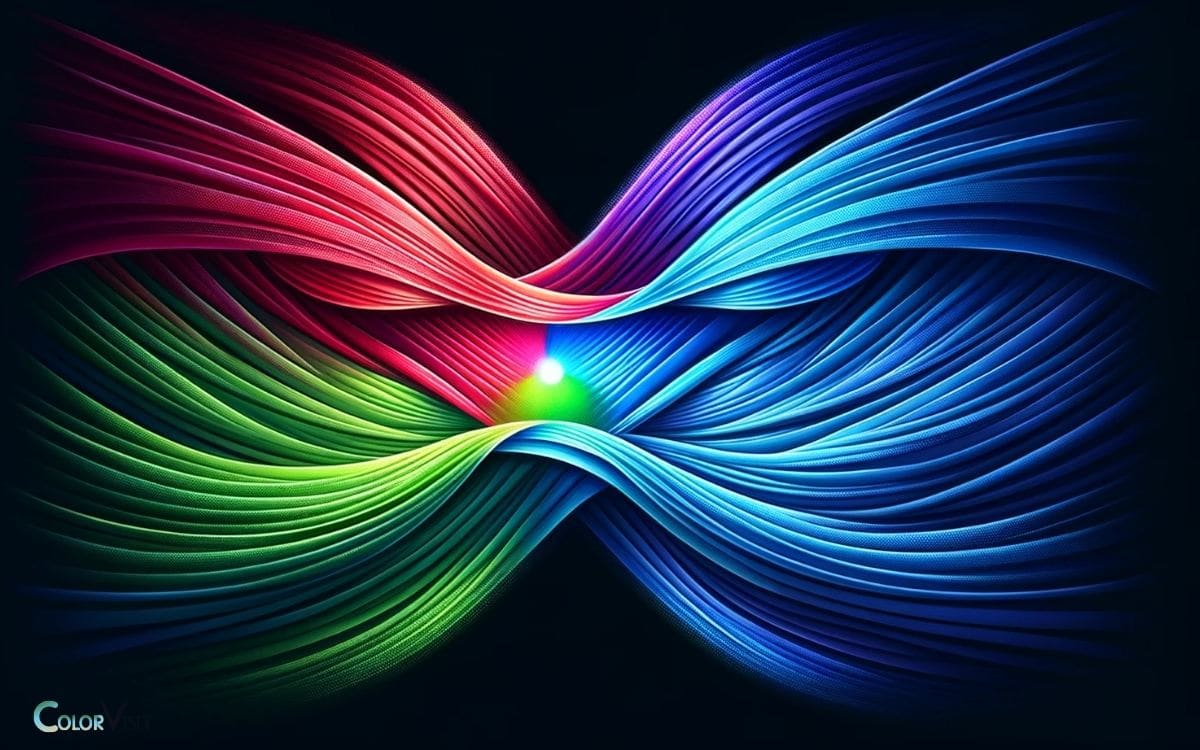Red Blue and Green Light Make What Color: White Light!
Mixing Red, Blue, and Green light will produce White light. This occurs due to additive color mixing, which mixes all of the colors of visible light to create a brighter color.
Additive color mixing occurs when different colors of light are combined, with red, blue, and green being the primary colors of light.
When these three colors are mixed together in equal intensity, they create white light. This is because each color contributes a part of the spectrum that, when combined, encompasses all visible light.
For example, digital screens use tiny pixels composed of red, blue, and green subpixels. By adjusting the intensity of each subpixel, a wide range of colors can be produced, including white when all are fully lit.
Key Takeaway
The Basics of Color Mixing
The basics of color mixing involve understanding how different colors combine to create new hues and shades. When light or pigments are mixed, they interact in predictable ways.
- In the additive color mixing model, combining red, blue, and green light produces white light, while the subtractive color mixing model involves combining cyan, magenta, and yellow pigments to create a dark, neutral color.
- Understanding the principles of color mixing allows for the creation of a wide spectrum of colors, offering freedom and creativity in artistic and design endeavors.
Whether it’s mixing paint on a canvas or adjusting the color balance of digital images, mastering color mixing empowers individuals to evoke particular emotions, convey messages, and express themselves with precision and impact.
The Science of Light Spectrums
The science of light spectrums explains how different wavelengths of light combine to create the vast array of colors we perceive.
When red, blue, and green light intersect, they create a variety of colors through additive color mixing.
This occurs because each color corresponds to a specific range of wavelengths within the visible light spectrum.
The combination of red, blue, and green light can produce colors such as yellow, magenta, and cyan, as well as white light when all three primary colors are present in equal intensity.
- Red, blue, and green light are known as the primary colors of light.
- Additive color mixing is a key principle in the science of light spectrums.
- The visible light spectrum encompasses all the colors perceived by the human eye.
Exploring the RGB Color Model
Within the science of light spectrums, the RGB color model is utilized to represent colors through the additive combination of red, blue, and green light.
- This model is based on the principle that when red, green, and blue light are mixed together, they create a wide array of colors.
- In the RGB color model, each color is represented by a combination of these three primary colors, with each component ranging from 0 to 255.
- By manipulating the intensity of each of these primary colors, an extensive range of colors can be achieved, making it a fundamental model in digital imaging and electronic displays.
- Understanding the RGB color model is essential for comprehending how colors are displayed on screens and generated in digital images.
This knowledge forms the basis for understanding additive color synthesis, which we will delve into next.
Understanding Additive Color Synthesis
Additive color synthesis is a fundamental concept in the RGB color model, employing the principle that red, blue, and green light sources combine to produce a diverse spectrum of colors.
- When these three primary colors are mixed together, they create a range of secondary and tertiary colors, forming the basis for the vibrant hues seen on digital screens and in other electronic displays.
- Understanding the additive color synthesis process is crucial for grasping how color is produced in digital imaging and display technologies.
- This knowledge allows for the creation of captivating visual experiences and is essential for anyone working in graphic design, photography, or digital media.
By comprehending additive color synthesis, individuals can manipulate and combine light sources to achieve an extensive array of colors with the potential for limitless creative expression.
- Additive color synthesis is based on the principle of combining different intensities of red, green, and blue light to create various colors.
- The RGB color model is widely used in electronic displays, including televisions, computer monitors, and digital cameras, due to its ability to produce a broad spectrum of colors.
- Understanding additive color synthesis is essential for creating captivating visual experiences in various digital media and graphic design applications.
Applications in Digital Displays
The application of additive color synthesis in digital displays revolutionizes the reproduction of vibrant, high-fidelity colors across a wide array of electronic devices.
This technology enables digital displays to create a broad spectrum of colors by blending red, green, and blue light in varying intensities.
The following table illustrates the primary colors of light and their combinations in additive color synthesis:
| Red | Green | Blue |
|---|---|---|
| 1 | 0 | 0 |
| 0 | 1 | 0 |
| 0 | 0 | 1 |
| 1 | 1 | 0 |
| 1 | 0 | 1 |
| 0 | 1 | 1 |
Digital displays utilize this principle to produce an extensive range of colors, providing viewers with vivid and lifelike visual experiences.
Whether it’s on a smartphone, computer monitor, or television screen, additive color synthesis enhances the quality and depth of color representation in digital media.
Conclusion
The combination of red, blue, and green light creates a range of colors through additive color synthesis.
This process is utilized in digital displays, where the RGB color model is used to produce a wide array of colors.
Interestingly, the human eye is capable of perceiving millions of different colors, and the RGB color model is essential in reproducing this vast spectrum of hues in digital technology.

